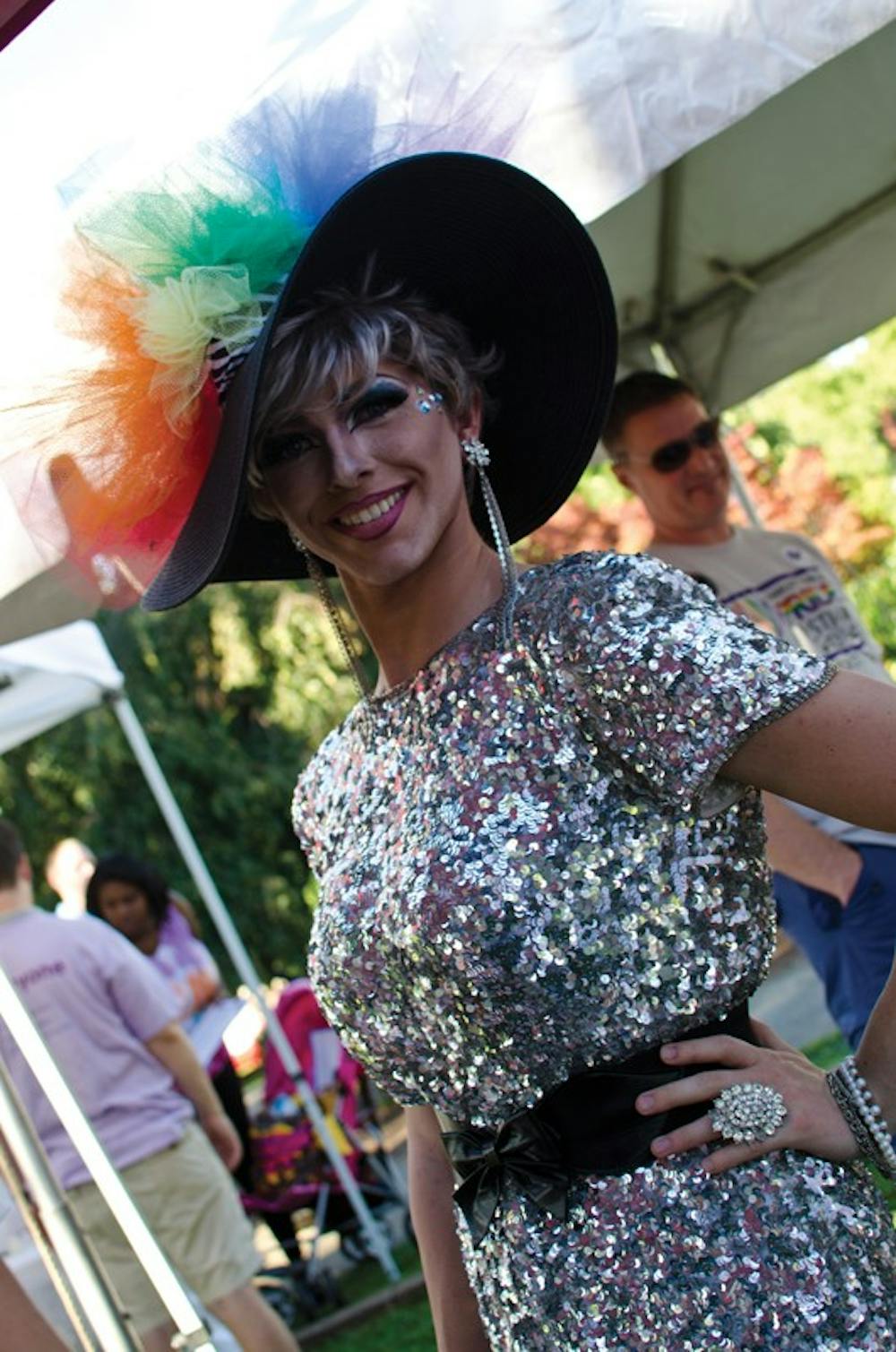After a tiring Thursday packed with classes, a Queer Students Union meeting and homework, third-year College student Jomar Figueroa and second-year College student Connor Roessler had one last important task: prep. There was makeup to buy, routines to choreograph and shaving to do. The reason? Friday night’s Drag Bingo, a fundraiser regularly hosted by the AIDS Services Group in Charlottesville.
Drag is characterized by an individual dressing and performing as an entertainer of the opposite gender — most often men performing as a woman, or a series of women, though women can dress as drag kings as well. Though drag is often confused with transvestism — as both include switching gender roles — drag is primarily viewed as a form of artistic expression.
“[Drag has] always been a weird fascination,” said Figueroa, a QSU co-president. “I made my debut in the spring semester [of my first year] and I’ve been doing it ever since. There’s a weird sort of sisterhood between [the drag queens] — it’s almost like a pseudo family.”
Although Figueroa and Roessler — QSU’s social chair — love the creativity involved with performing, preparing for a drag show is no easy feat. The week before is filled with pre-planning, which includes music selection, as well as costume, hair and makeup design. Other crucial steps include shaving and gluing down eyebrows to get ready for heavy makeup.
Drag shows are also costly. Wo Chan, a drag performer who graduated from the University in 2013, works a day job at Sephora in New York to cover the costs. In the evenings, he transforms into “Pearl Harbor,” his drag persona.
“Drag is really expensive,” Chan said. “I’m wearing a $40 dress, $30 shoes and a $50 wig, in addition to three pairs of tights, the spanx, the girdle, the makeup and three pieces of jewelry, [which cost] $20 each. You’re walking around with $500 worth of merchandise on your body.”
A drag show is made up of numerous parts, giving queens the ability to personalize their costumes, makeup and routines, all while taking inspiration from famous artists, writers and musicians. Roessler, Figueroa and Chan plan out their music, choose their outfits and do their own makeup. While Figueroa choreographs certain numbers, Roessler completely freestyles and performs more acrobatic moves.
“I love the creativity to do whatever I want to do,” Roessler said. “I love to take what other people have made and apply that to myself. It’s also really [nice] to be the center of attention for a little bit.”
For Chan, the stage is home — a place where he feels unconditional acceptance.
“I love performing,” Chan said. “The energy and the feel from the crowd is so distinct and so defining of the LGBT scene. [There is] so much positive energy and so much acceptance.”
Roessler, Figueroa and Chan were introduced to older queens through QSU, who later helped them get involved in drag. Three queens integral to the local drag community graduated from the University last spring.
“The QSU scene was really my incubator when it came to drag,” Chan said. “I had my biggest performances at Drag Bingo in front of 300 to 500 people. As a gay man, [that was] where all my friends were. QSU has been my home.”
The three have found their peers to be mostly accepting of their roles, although they have grown closest to their fellow members of QSU.
“You’ll always have pockets of people who are not as accepting as others, but, as a whole, I haven’t experienced too much hate in the U.Va community,” Figueroa said.






